
After years in the making, Joe McKellar @viroscope.bsky.social’s final PhD paper is finally out today in PNAS! 🎉 🎉🎉
www.pnas.org/doi/10.1073/...
@morielab.bsky.social
Fatty genome… https://www.crbm.cnrs.fr/controle-cytoplasmique-de-la-stabilite-du-genome/

After years in the making, Joe McKellar @viroscope.bsky.social’s final PhD paper is finally out today in PNAS! 🎉 🎉🎉
www.pnas.org/doi/10.1073/...
Big congratulations! MicroPublication is a so valuable initiative to inform the community of accomplished work that will save time and effort to other researchers! I am superhappy to see you joined this initiative! Congratulations to Louison! 🎉
04.10.2025 08:16 — 👍 2 🔁 0 💬 1 📌 0Massive congratulations, Felipe! This work is a gigantic endeavour! And a fantastic resource! Mechanistically, is the absence of Homologous Recombination intrinsic to the pathways dictated by using Cas9 to create the cut? In S. cerevisiae Cas9 cuts very efficiently engage HR. Felicidades de nuevo! 😍
04.10.2025 08:06 — 👍 1 🔁 0 💬 2 📌 0
Did you know that all nuclear pore complexes (NPCs) are not the same? @luskinglab.bsky.social propose a new hypothesis for how nuclear mechanics may impact the compositional plasticity of NPCs with implications for tissue-specific diseases caused by NPC dysfunction.
www.nature.com/articles/s41...
A significant conceptual advance in the field of DNA recombination… great work by the labs of @brookscrickard1.bsky.social
and Michelle Wang
I would like to read what @marcofumasoni.bsky.social has to say about these data…!
07.09.2025 13:02 — 👍 2 🔁 0 💬 1 📌 0Coincident with loss of Rev1, however… 🤔
07.09.2025 12:53 — 👍 1 🔁 0 💬 1 📌 0Thanks so much, this is very interesting, so do you think (or can know) if they co-lost the fatty acid synthase and the DNA polymerase delta??? I now wonder if there might exist a functional association if this is the case…
07.09.2025 09:34 — 👍 2 🔁 0 💬 1 📌 0Cool… can you provide me with the original work about fatty acid synthase dependency? We study the control that lipids exert onto genome (in)stability… thus not sure the two events you name are unrelated…!!! 🧐
06.09.2025 13:25 — 👍 1 🔁 0 💬 1 📌 0
Hi, super nice story! Just to mention that in S. cerevisiae it has been shown that DNA synthesis can be replicated (at least for initiation) by DNA polymerase delta!, both basally and, most importantly with respect to your findings, in the absence of Pol ε! doi.org/10.1038/s414...
06.09.2025 07:24 — 👍 1 🔁 0 💬 1 📌 0Huge congratulations, Milena! This is fantastic! You are going to make awesome things
05.09.2025 05:36 — 👍 0 🔁 0 💬 1 📌 0
Our PhD students @albamena.bsky.social & @annasjung.bsky.social wrote a thing on our ongoing efforts for understanding adipocytes & metabolism @erc.europa.eu
👇
www.europeandissemination.eu/article/fat-...

I am very happy to share that my PhD work in the Mansfeld lab (www.mansfeldlab.com) was published yesterday! 🎉 In this study, we characterized a novel redox switch on p21 that regulates proliferation: www.cell.com/molecular-ce...
Huge thanks to everyone involved for making this possible 🙏@icr.ac.uk

New work from stellar scientists Jeremy Williams and Roman Camarda. Many contributors including the amazing Zena Werb and Atul Butte
Work explores how breast cancer cells interact directly with adipocytes via gap junctions, leading to lipid release.
@ctbatucsf.bsky.social @ucsfcancer.bsky.social

Ne manquez pas le 20e GERLI International Lipid Meeting, Strasbourg, 3-5 nov 2025
Rejoignez chercheurs et experts pour explorer les dernières avancées en biologie des lipides, assistez à des conférences, posters et prix scientifiques !
Plus d'info : : www.gerli.com/congres/welc...

Cartoon showing that G1 phase-synchronized cells showed dose-dependence in the relative mtDNAcn increase at 48 h after X-ray exposure, G2 cells at 24 h, and S phase cells at 24 and 48 h.
Ryosuke Seino, Kai Nishikubo and Hisanori Fukunaga interrogate cell cycle- and dose-dependent effects on mitochondrial DNA copy number variation following irradiation.
#OpenAccess #ReadandPublish
journals.biologists.com/jcs/article/...

Boumard, B., Le Meur, G., Aboutine, L., Stefanutti, M., Maalouf, T., El-Hajj, M., Choi, B. J., Bauer, R., Bardin, A. J. (2025). Cell-type-specific nucleotide sharing through gap junctions impacts sensitivity to replication stress in #Drosophila. Dev Cell, www.sciencedirect.com/science/arti...
12.08.2025 23:44 — 👍 4 🔁 3 💬 0 📌 1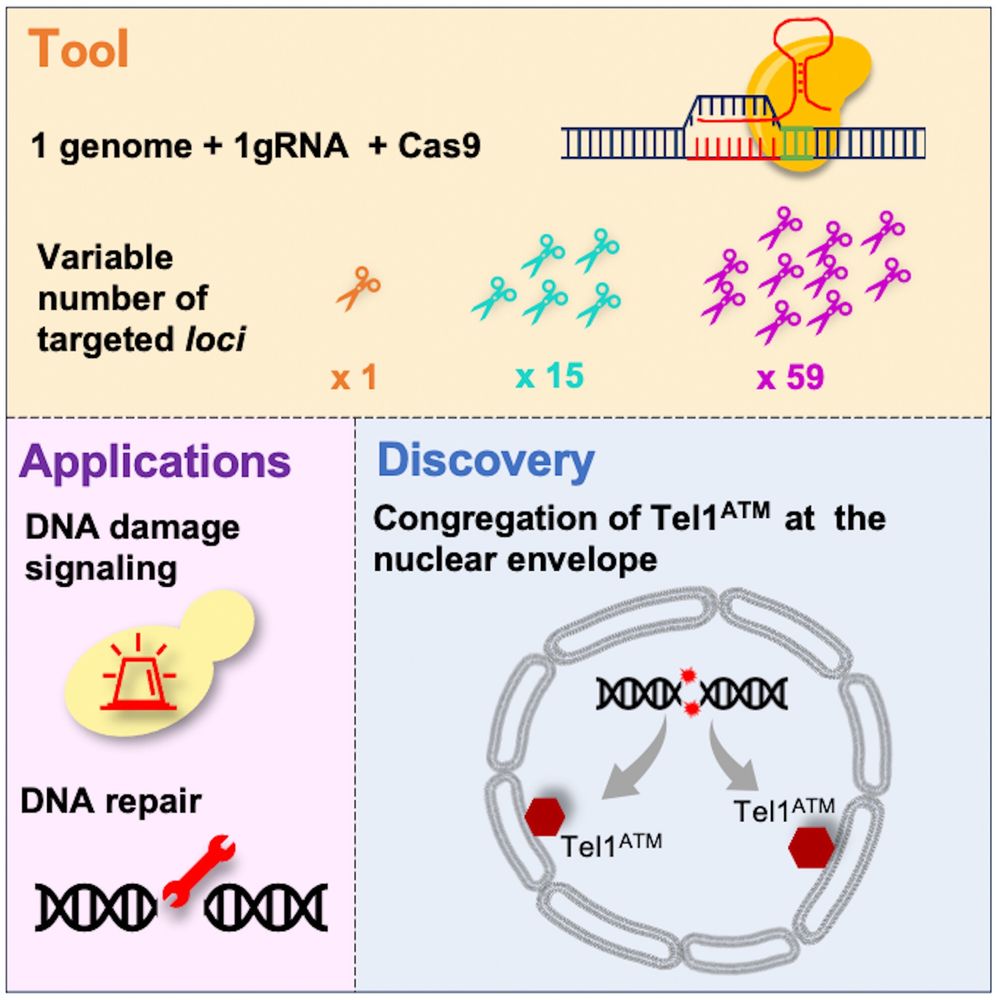
@morielab.bsky.social proudly presents a tool to induce, in S. cerevisiae, DNA double strand breaks in a site-specific AND in a dose-dependent manner, in a very simple way: just transform two plasmids!!! It allows you to assess many aspects of DNA damage signaling & repair!
doi.org/10.1111/febs...
Tardigrades tardigrades tardigrades
05.08.2025 12:56 — 👍 2 🔁 1 💬 0 📌 0Reminiscent to how mitochondria can selectively extrude damaged mtDNA, locally, along with mitochondrial membranes (or through them) towards the cytoplasm… DNA-lipids interactions at play!!
03.08.2025 20:39 — 👍 2 🔁 1 💬 0 📌 0🚀 Today we're launching the 'Night Science Institute', a non-for-profit organization to lead a cultural shift in science! You may say we're dreamers 😉, but we think we're not the only ones. Perhaps today you will join us to make the Day Science and Night Science parts of the process live as one!
29.07.2025 14:59 — 👍 118 🔁 45 💬 1 📌 4
I am happy to share our last preprint, where we identified FASN as an endogenous dsRNA-associated factor and demonstrated that its depletion triggers endodsRNA accumulation and a stronger antiviral response to exogenous dsRNAs,#RNA, #interferon,#immunometabolism
www.biorxiv.org/cgi/content/...
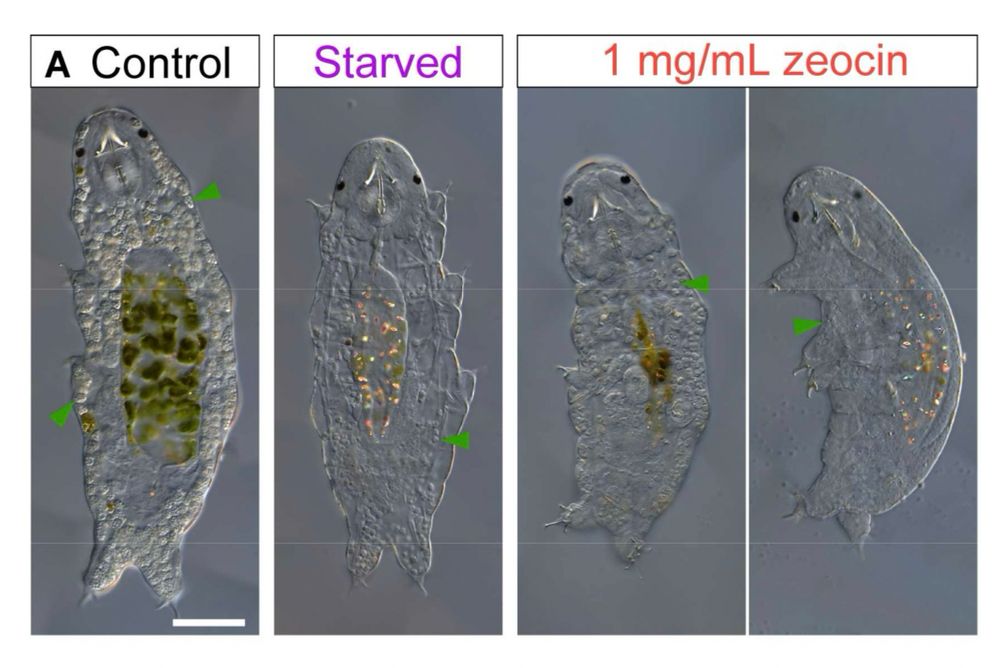
New preprint from @morielab.bsky.social: tardigrades are super resistant to DNA insult, yet are not immortal. We asked: why & how do they die? We have discovered their Achilles’ heel! Check it to know (spoiler: it has to do of course with DNA… but also lipids!! 😍)
www.biorxiv.org/cgi/content/...

New preprint from @morielab.bsky.social: tardigrades are super resistant to DNA insult, yet are not immortal. We asked: why & how do they die? We have discovered their Achilles’ heel! Check it to know (spoiler: it has to do of course with DNA… but also lipids!! 😍)
www.biorxiv.org/cgi/content/...
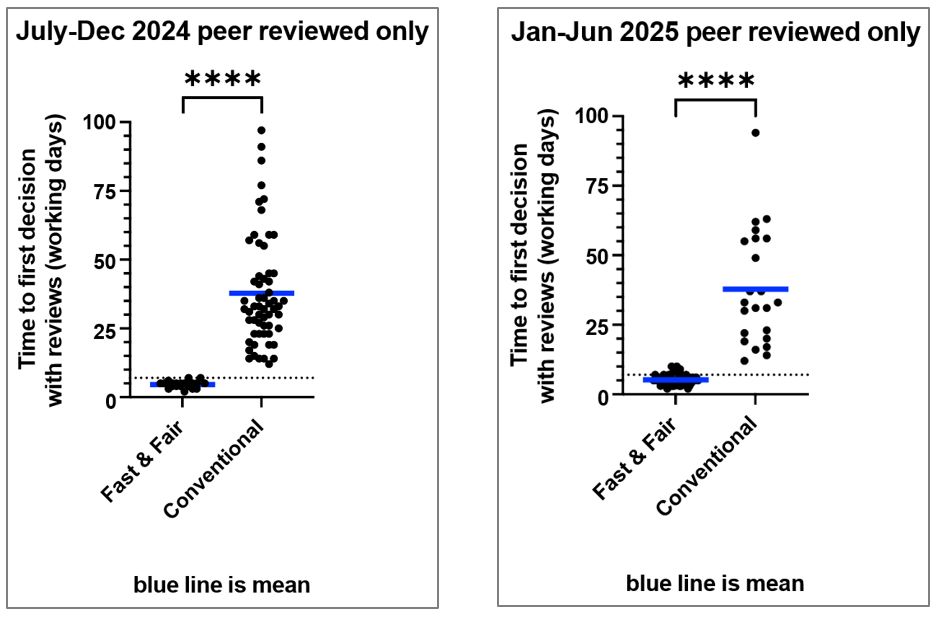
Two scatter plots compare the time to first decision with reviews (in working days) for "Fast & Fair" and "Conventional" peer review methods. The left plot, titled "July-Dec 2024 peer reviewed only," and the right plot, titled "Jan-Jun 2025 peer reviewed only," both show that "Fast & Fair" has significantly lower decision times than "Conventional." Each plot has a Y-axis ranging from 0 to 100 working days and X-axis categories for the two review methods. Data points cluster lower for "Fast & Fair" and higher for "Conventional," with blue lines indicating lower mean times for "Fast & Fair." Asterisks (****) above both plots indicate statistical significance. A caption notes that the blue line represents the mean.
Phase II of our Fast & Fair peer review experiment is testing scalability. Results so far are promising. Read more at bit.ly/41N31tO.
#FastandFairPeerReview #PeerReview #ScientificPublishing
Felicidades!!!!!🎉
21.07.2025 06:52 — 👍 1 🔁 0 💬 0 📌 0Excited for our next special issue and looking forward to working with Abby Buchwalter (@abbybuch.bsky.social) and Megan King (@luskinglab.bsky.social)! Working on the cell biology of the nucleus? Send your papers our way!
#notforprofit
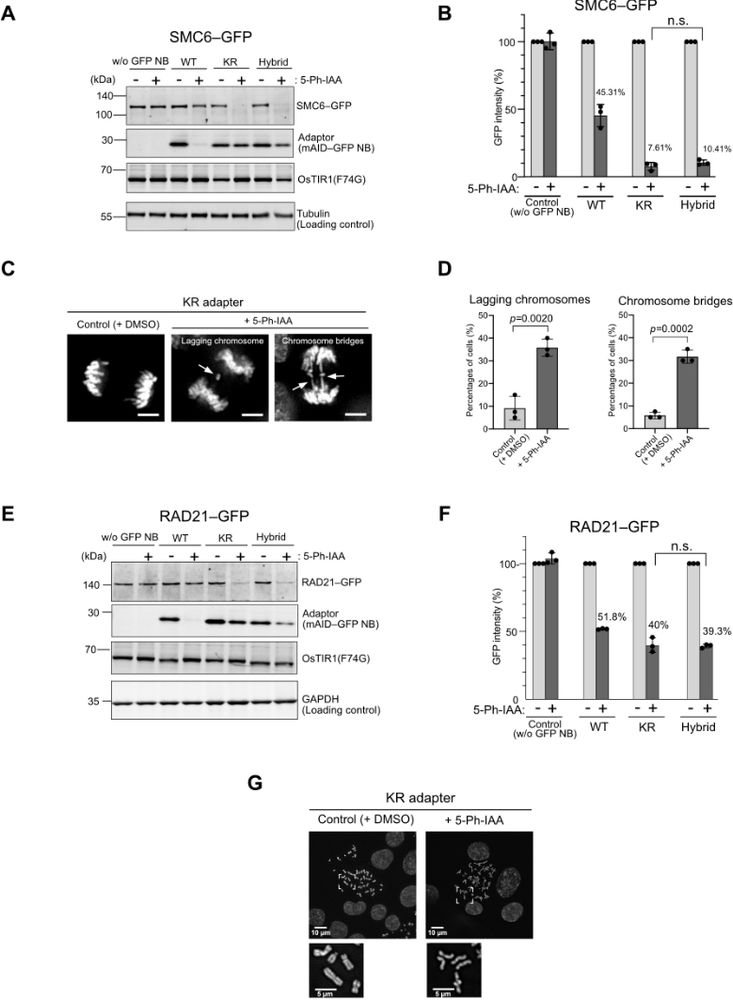
Figure showing that scAb-AID2 with an anti-GFP nanobody adaptor enables degradation of GFP-fused proteins.
Moutushi Islam, Masato Kanemaki and colleagues describe their single-chain antibody-based auxin-inducible degron system which enables degradation of GFP-tagged and untagged proteins.
Highlight: journals.biologists.com/jcs/article/...
Article: journals.biologists.com/jcs/article/...
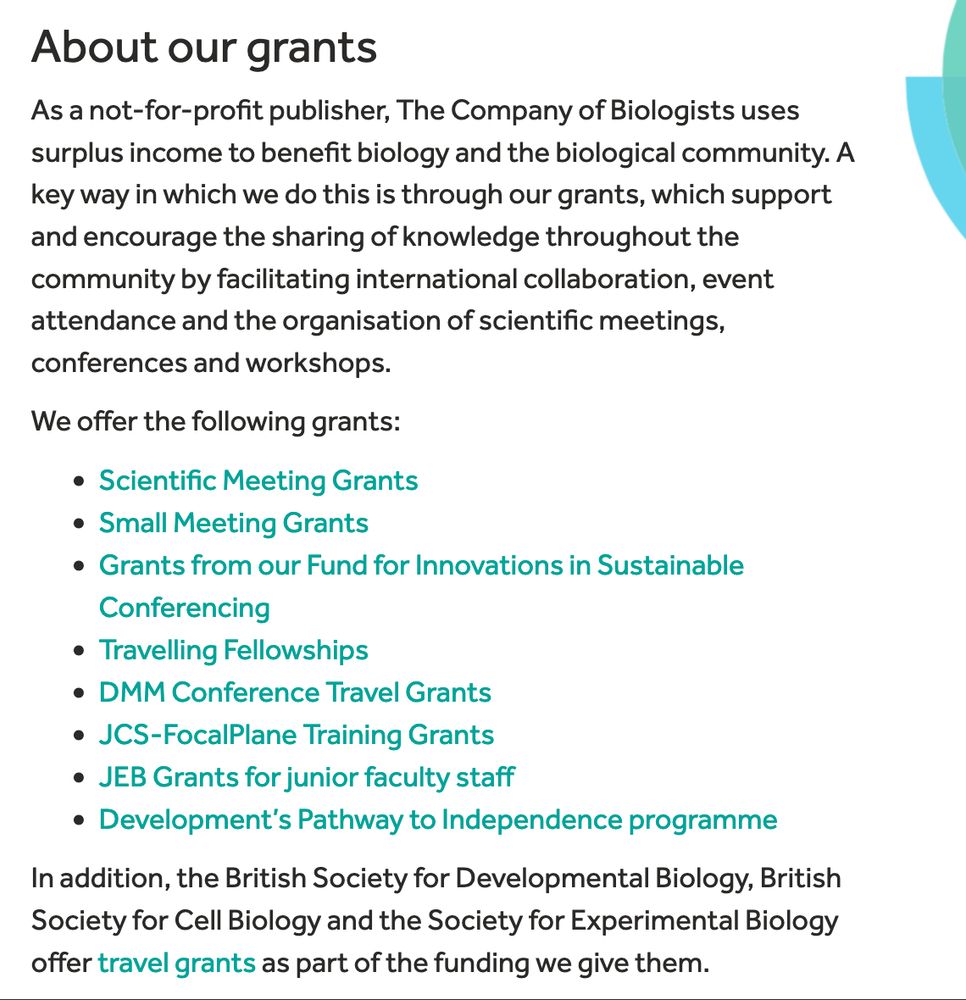
About our grants As a not-for-profit publisher, The Company of Biologists uses surplus income to benefit biology and the biological community. A key way in which we do this is through our grants, which support and encourage the sharing of knowledge throughout the community by facilitating international collaboration, event attendance and the organisation of scientific meetings, conferences and workshops. We offer the following grants: Scientific Meeting Grants Small Meeting Grants Grants from our Fund for Innovations in Sustainable Conferencing Travelling Fellowships DMM Conference Travel Grants JCS-FocalPlane Training Grants JEB Grants for junior faculty staff Development’s Pathway to Independence programme In addition, the British Society for Developmental Biology, British Society for Cell Biology and the Society for Experimental Biology offer travel grants as part of the funding we give them.
They are a REMARKABLE supporter of scientists and the community. In addition to their five journals, they support dozens of scientific meetings each year, and provide travel grants and other support 2/n
www.biologists.com/grants/
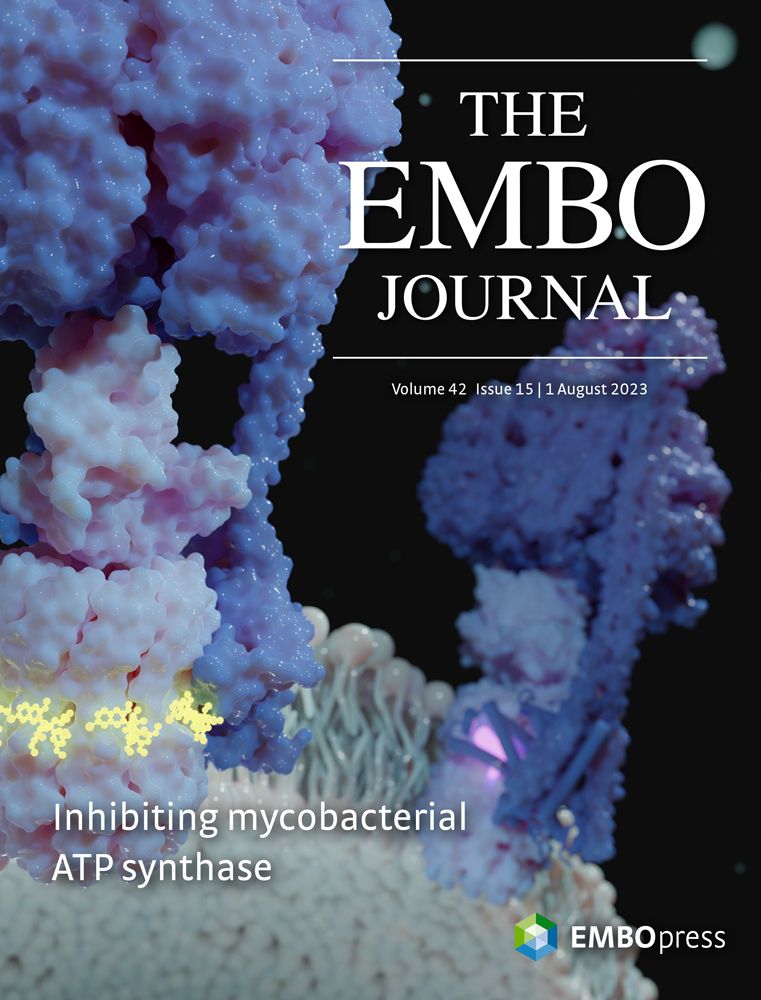
We exploited the system to discover that Tel1, ATM in humans, congregates at the nuclear envelope during the early steps of DNA break sensing… combined with our previous finding that Tel1/ATM bind lipids (doi.org/10.15252/emb...), this
hints at nuclear envelope lipids as key in DNA damage detection!